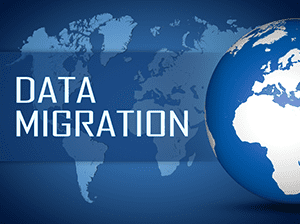Data migration describes transferring data between storage types, formats or computer systems with as little change as possible. Due to acquisitions, relocation, or outgrowing a current system, companies find the need to migrate data. More than just a “lift and shift” approach, good data migration catalyzes rethinking of Data Strategy and Data Architecture through:
- Upgrading performance
- Removing the risks posed by unusable and inconsistent content
- Increasing the partnership between IT and business
- Rethinking and doing data processes
- Making data assets more usable for the organization
The rise of using serverless computing or cloud computing, has sparked a renewed interest in data migration. Data migration activities can be manual, automated or fielded out to a third-party vendor.
Other Definitions of Data Migration Include:
- Process of translating data from one system to another when a company replaces the current computing system with a new one. (PharmaiQ)
- The process of updating an application from a prior release to a newer release. (AutoDesk)
- “Moving content from one place to another.” (Duncan Bradley)
- “The migration of on-premise systems to the public cloud.” (Gartner)
- When data is moved from one place to another. ( Microsoft)
Data Migration Case Studies Include:
- A large sporting goods retailer who wanted to free-up on premises storage space
- A pharmacy replaces the current computing system with a new one
- A vendor has innovated and released new products or upgrades to help customers get an advantage
Businesses Need Data Migration To Deal With:
- Server or storage upgrades
- Equipment replacements or upgrades
- Website consolidation
- Server maintenance
- Data center relocations
- Redundancy to reduce the risk of failure
Image used under license from Shutterstock.com
